Buy Cucumber Seeds from various brands at DesiKheti:
Buy Advanta Cucumber Seeds Online
Buy Agroisia Cucumber Seeds Online
Buy Chia Tai Cucumber Seeds Online
Buy Dhaanya Seeds Cucumber Seeds Online
Buy Dutch Agriseeds Cucumber Seeds Online
Buy Elite Seeds Cucumber Seeds Online
Buy East West Cucumber Seeds Online
Buy Enza Zaden Cucumber Seeds Online
Buy Fito Cucumber Seeds Online
Buy HM Clause Cucumber Seeds Online
Buy Indo American Seeds Cucumber Seeds Online
Buy JK Seeds Cucumber Seeds Online
Buy Kalash Cucumber Seeds Online
Buy Kaveri Seeds Cucumber Seeds Online
Buy Known You Cucumber Seeds Online
Buy Konica Seeds Cucumber Seeds Online
Buy Mahyco Cucumber Seeds Online
Buy Max Seeds Cucumber Seeds Online
Buy Namdhari Seeds Cucumber Seeds Online
Buy Nath Seeds Cucumber Seeds Online
Buy Noble Seeds Cucumber Seeds Online
Buy BASF Nunhems Cucumber Seeds Online
Buy Pahuja Seeds Cucumber Seeds Online
Buy Pan Seeds Cucumber Seeds Online
Buy Rijk Zwaan Cucumber Seeds Online
Buy Sarpan Seeds Cucumber Seeds Online
Buy Seminis Cucumber Seeds Online
Buy Sungro Seeds Cucumber Seeds Online
Buy Syngenta Cucumber Seeds Online
Buy Takii Seed Cucumber Seeds Online
Buy Tokita Cucumber Seeds Online
Buy Unisem Cucumber Seeds Online
Buy US Agriseeds Cucumber Seeds Online
Buy Vagro Seeds Cucumber Seeds Online
Buy VNR Cucumber Seeds Online
Buy Welcome Seeds Cucumber Seeds Online
Cucumber is scientifically known as Cucumis sativus. Cucumber belong to the Cucurbitaceae family. Cucumber originated in India. Cucumbers have three main varieties: slicing, pickling, and seedless. Whether enjoyed raw, tossed into salads, or cooked as a vegetable, cucumbers offer a refreshing and nutritious addition to your diet.
Cucumbers are packed with essential vitamins B, C, and K. Cucumbers are also rich in calcium, potassium, magnesium, molybdenum, silica, and folate. Cucumber is particularly beneficial for those dealing with constipation, jaundice, indigestion, and heart issues. Other Indian names for Cucumber are Kheera, Vellari, Dosakaya, and Shosha.
Cucumbers are cultivated globally, with leading producers including China, India, Turkey, Iran, Japan, Europe, and the United States. China dominates the global cucumber market, producing approximately 77.3 million tons in 2022—representing over 81.66% of the world's total production. The primary Kheera-growing states in India include West Bengal, Madhya Pradesh, Uttar Pradesh, Karnataka, and Punjab.
Climate for Kheera Cultivation
Dosakaya thrives in warm weather, making them ideal for warm-season cultivation. However, Khira is sensitive to cold and frost, which can damage the crop. High humidity combined with shorter day lengths encourages the growth of Kheera female flowers, which are essential for Kheera fruit production.
The minimum temperature for Cucumber seed germination is 18°C. Optimal growth of Dosakaya plants occurs at temperatures between 25°C and 35°C. It's essential to avoid prolonged exposure of Kheera plants to temperatures above 35°C, as this can negatively impact both the yield and quality of the Dosakaya fruit.
Soil for Dosakaya Farming
For an early and good Dosakaya crop, sandy loam soils are ideal, though heavy soils can also produce high Khira yields. Kheera Plants prefer slightly acidic soils, with a pH range of 5.5 to 6.7. Good drainage is crucial to prevent waterlogging, which can harm the Kheera plants.
Land Preparation for Sowing Cucumber Seeds
Proper land preparation is key to a successful Dosakai harvest. The field should be ploughed 3 to 4 times to achieve a fine tilth. Incorporating farmyard manure (FYM) at a rate of 10 to 15 tons per hectare during the final ploughing will enrich the soil and support healthy Kheera plant growth.
Cucumber Seeds and Propagation Material
- Selecting the Right Cucumber Variety: Choose a Cucumber variety based on your specific requirements, whether it's for fresh consumption, pickling, or other uses. Consider local market demand, climatic conditions, soil type, available irrigation, and local pest and disease challenges.
- Procuring Quality Cucumber Seeds: Always source Cucumber seeds from a reliable and trusted supplier. At Desikheti, we offer a wide selection of high-quality Cucumber seeds.
- Cucumber Seed Requirement: 250 to 300 grams of Cucumber seeds per acre of land.
- Cucumber Seed Treatment: Hybrid and OP Cucumber seeds marketed by the private sector are usually treated with chemicals. However, in all other cases, the Cucumber seeds can be treated with Trichoderma viride (4g/kg), Pseudomonas fluorescens (10g/kg), or Carbendazim (2g/kg) before sowing to protect against soil-borne diseases.
Time of Sowing Cucumber Seeds
- North Indian Plains: Sow Cucumber seeds in the months of February to March
- Hills: Sow Cucumber seeds in the months of April to May
- South India: Sow Cucumber seeds in October to November
Method of Sowing Cucumber Seeds
Cucumber seeds can be sown on raised beds, in furrows, or in pits. Generally, two Cucumber seeds are sown per hill on both sides of the bed.
For sowing Cucumber seeds in the pit method, dig pits measuring 45 x 45 x 60 cm and fill them with a mix of FYM, cattle manure, and soil. Sow 3 to 4 Cucumber seeds per pit, with a spacing of 1.5 to 3 metres between rows and 60 to 90 cm between plants.
Nutrient Management for Khira Farming
Kheera plants are nutrient-hungry plants that require 100 kg of nitrogen (N), 50 kg of phosphorus (P), and 50 kg of potassium (K) per hectare. Apply half of the nitrogen, along with all of the phosphorus and potassium, in the pits or at the time of sowing Cucumber seeds. Apply the remaining nitrogen 30 days after sowing Cucumber seeds to support continued growth.
Irrigation Management for Cucumber Cultivation
Proper irrigation is essential for Dosakaya cultivation. Avoid over-irrigation and waterlogging, as these can lead to chlorotic (yellow) foliage and stunted Khira plant growth.
In dry weather, water the Kheera crop every five days. Pay special attention to the Kheera flowering and full bloom stages, as moisture stress during these times can lead to non-viable pollen and reduced Dosakaya yield. Ensure the Kheera plants receive sufficient water during fruit enlargement as well.
Training and Pruning for Cucumber crop
To enhance fruit quality and yield, train Kheera vines on bamboo structures using ropes or wires. Khira Plants can also be trained using a bower system, with the bower height set at about 1.5 metres. Maintain a spacing of 2 metres between rows and 1 metre between Khira plants. Pruning secondary shoots up to the 10th node can further increase Dosakaya fruit production.
Weed Management for Cucumber Farming
Keeping the Kheera field weed-free throughout the growing season is crucial. Conduct the first weeding 15 to 20 days after sowing Cucumber seeds, followed by two more weedings at intervals of 25 to 30 days. This ensures that the Vellari Plants have access to all the nutrients and water they need without competition from weeds.
Pest and Disease Management in Cucumber Cultivation
Common Pests of Cucumber
Red Pumpkin Beetles (Aulacophora foveicollis)
- Red pumpkin beetles are highly destructive, creating holes in Dosakaya leaves and feeding on flowers.
- They damage Kheera foliage, flowers, and cotyledons by biting into them, leading to numerous holes and stunted Dosakaya plant growth. Grubs, or larvae, burrow into the soil, feeding on roots and boring into Vellari vines and fruits that touch the ground.
- Early-sown Khira crops are especially vulnerable, sometimes requiring resowing of Cucumber seeds due to severe damage.
Epilachna Beetle (Epilachna sp)
- The minute grubs begin feeding on the fresh Vellari leaf surface shortly after hatching, leaving only the veins and veinlets intact. As they mature, these grubs become voracious feeders, often congregating in large numbers.
- Both grubs and adult beetles typically feed on the underside of Khira leaves, causing extensive damage.
- Infested Dosakaya leaves take on a lace-like appearance due to the destruction of green tissue between the veins (skeletonization).
- Severe infestations can cause Kheera leaves to dry out and the plant to appear sickly.
Fruit Fly (Bactrocera cucurbitae)
- Maggots burrow into near-ripe Shosha fruits, feeding on the pulp and causing lesions.
- This damage often leads to secondary bacterial infections, causing the Khira fruit to decay.
- Infested Dosakaya fruits may drop prematurely, and those that remain on the Vellari plant may become deformed and unusable.
Aphids (Aphis gossypii)
- Aphids typically colonise Dosakaya plants once they begin forming runners.
- These small insects suck sap from the underside of Kheera leaves, causing them to curl and stunt the Dosakaya plant's growth.
- Both nymphs and adults feed on tender Khira leaves, shoots, flowers, and pods.
- Aphids also excrete a substance called honeydew, that lead to the growth of sooty mold. This mold interferes with photosynthesis, further weakening the Dosakaya plant.
Serpentine Leafminer (Liriomyza trifolii)
- The maggots puncture the outer layers of Khira leaves and scrape away the chlorophyll-rich tissue.
- This feeding behaviour creates winding, serpentine trails on the Kheera leaves.
- Severe infestations can significantly reduce the Dosakaya plant's ability to photosynthesize, potentially leading to Khira plant death.
Common Diseases of Cucumber
Powdery Mildew (Erysiphe cichoracearum)
- Powdery mildew appears as a whitish or grey powdery growth on the foliage, stems, and young growing parts of Vellari plants.
- This fungal growth eventually covers the entire Kheera leaf surface, causing the affected areas to turn brown and dry out.
- The disease leads to premature defoliation and can result in undeveloped, deformed Dosakaya fruits.
Downy Mildew (Pseudoperonospora cubensis)
- Downy mildew causes yellow, angular spots to appear on the upper surfaces of Khira leaves.
- In moist weather, the corresponding lower surfaces of Khira leaves develop purplish downy growth.
- As the disease progresses, the spots turn necrotic, and the Khira leaves turn yellow and fall off.
- This disease stunts plant growth, often resulting in poor Dosakaya fruit quality and taste.
Cucumber Mosaic Virus (CMV)
- Infected Cucumber plants exhibit downward curling of leaves, mottling, distortion, and wrinkling.
- The Cucumber leaves may also be reduced in size.
- CMV causes stunted growth and a rosetting effect on young Kheera leaves.
- Infected Dosakaya fruits are often misshapen, mottled, and warty and may be bumpy or deformed if the infection occurs late in the growing season.
Anthracnose (Colletotrichum lagenarium)
- Anthracnose affects all above-ground parts of the Vellari plant.
- In Kheera seedlings, it can cause wilting and death. Older Dosakai plants develop yellowish-brown spots on the leaves, which may coalesce and cause the Khira leaves to dry up.
- Severe cases result in the formation of "shot holes" where necrotic tissue falls out.
- Kheera stem infections lead to shallow, water-soaked lesions that eventually girdle the stem, causing shoot death.
- Infected Kheera fruits develop circular, black, sunken lesions, often becoming tough and unpalatable.
Bacterial Wilt (Erwinia tracheiphila)
- Bacterial wilt first affects individual Dosakai leaves or lateral shoots before spreading to the entire Kheera plant.
- Infected Dosakai leaves, or shoots wilt and eventually die.
- In older Khira plants, wilting may begin with a single shoot but can spread to collapse the entire Kheera plant, especially during fruiting.
Angular Leaf Spot (Pseudomonas syringae pv. lachrymans)
- Angular leaf spot causes water-soaked, irregular, or angular lesions on Dosakaya leaves, young stems, and fruits.
- In wet conditions, these spots ooze a bacterial slime that dries into white crusts. The lesions enlarge and turn brown, and necrotic tissue may fall out, leaving irregular holes.
- On Khira fruits, the disease manifests as small circular spots with light tan coloured centres.
- Infected Kheera fruits may become deformed, especially if the infection occurs when they are young.
Harvesting Cucumber Fruits
Cucumbers are generally ready for harvest 45 to 50 days after sowing Cucumber seeds, depending on the variety. From the fruit set, it takes about 7 to 10 days for Kheera to reach the ideal marketable size. It's crucial to harvest Khira while they are still tender and green, as overripe Kheera fruits tend to lose value in the market. Harvesting regularly once every two days is recommended to ensure optimal Kheera fruit quality.
When picking Kheera, it's important to handle them gently. The Khira fruits should be clipped or snapped off the vine with a slight twist, rather than pulled, to avoid damaging the Kheera plant and preventing "pulled ends" that can affect the Khira fruit's appearance and shelf life.
Cucumber Fruit Yield
The average yield of Cucumber Fruits is about 8 to 12 tons per hectare.
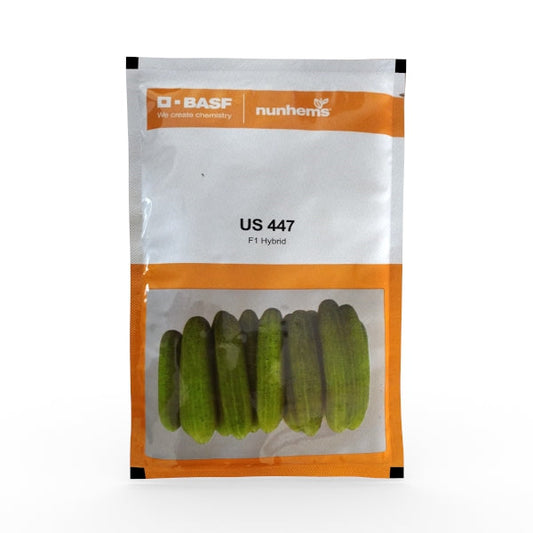 Sold out
Sold out Sold out
Sold out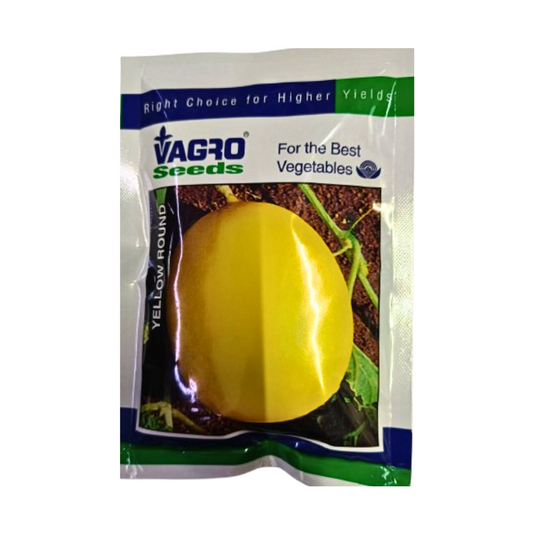
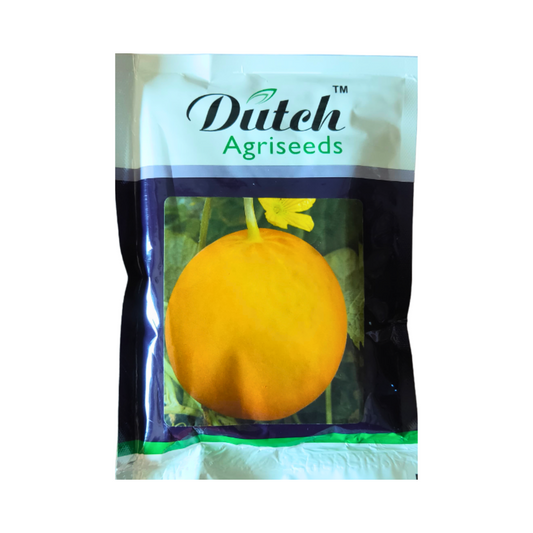
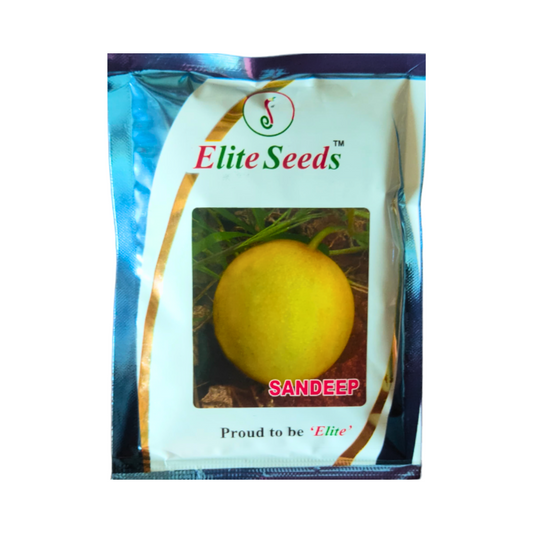
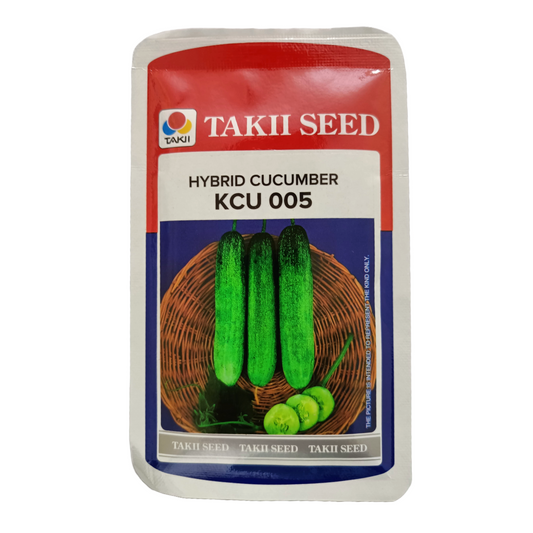 Sold out
Sold out Sold out
Sold out Sold out
Sold out Sold out
Sold out Sold out
Sold out Sold out
Sold out Sold out
Sold out Sold out
Sold out Sold out
Sold out
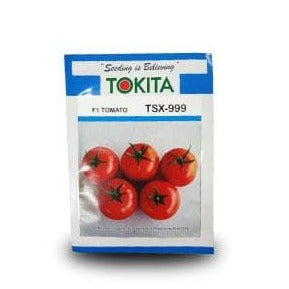 Sold out
Sold out Sold out
Sold out Sold out
Sold out Sold out
Sold out Sold out
Sold out Sold out
Sold out Sold out
Sold out Sold out
Sold out























